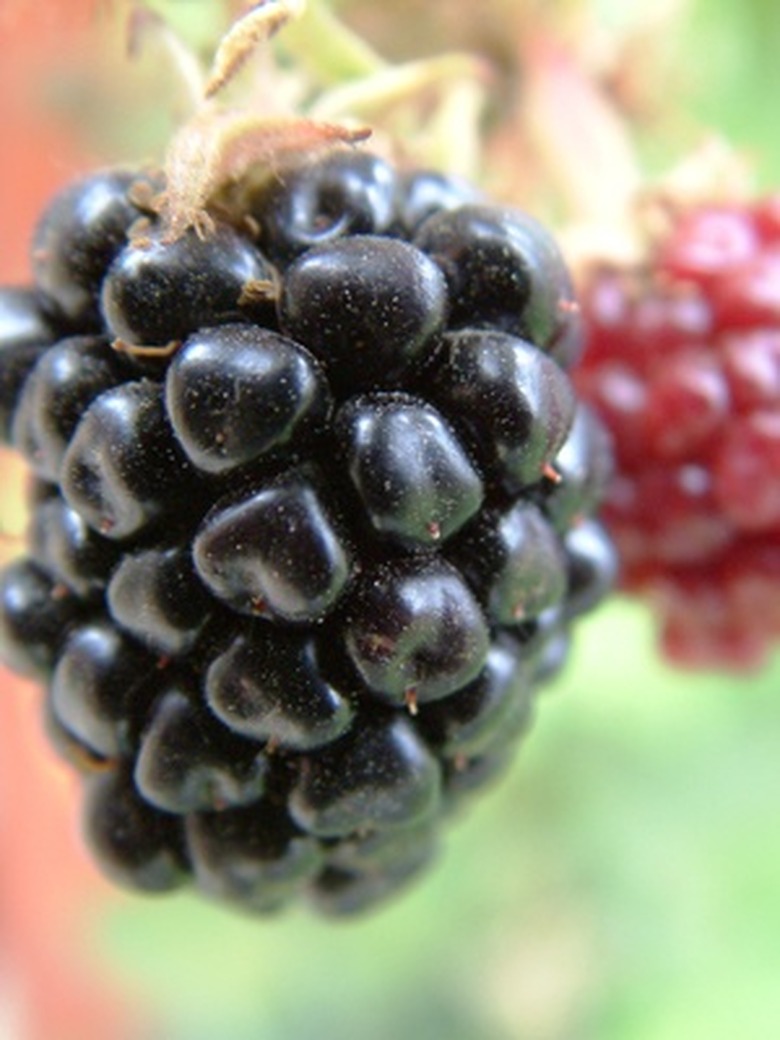The Sweetest Blackberry Plants
All blackberries are not created equal. Some are more frost tender than others and others are sweeter than the rest. Sweetness is a matter of personal taste, but many people prefer the varieties Darrow, Prime-Jim and Prime-Jan, Triple Crown and Chester Thornless. Some blackberries have become wild in certain parts of the country—the Himalayan blackberry is classified an invasive species and although it is sweet, gardeners are advised to avoid cultivating this species.
Darrow
According to Nature Hills Nursery, Darrow blackberries produce large, firm fruit that is juicy with a flavor reminiscent of honey that is a "true blackberry flavor." This variety is suitable for snacking, pies, cobblers, juice and all other purposes. Darrow has berries that are nearly black, producing a very large harvest in July. The plant is also tolerant of cold temperatures, so is appropriate for many northern gardens.
- All blackberries are not created equal.
- Some blackberries have become wild in certain parts of the country—the Himalayan blackberry is classified an invasive species and although it is sweet, gardeners are advised to avoid cultivating this species.
Prime-Jim and Prime-Jan
These two similar varieties of blackberries come to us from the University of Arkansas. They have become favorites of home gardeners for their vigor and medium sized glossy black berries that have a good, sweet flavor that is similar to other thornless varieties, according to U.A. Neither of these varieties will become invasive, so they are recommended for gardens in areas such as California where other blackberries, such as the Himalayan, have taken over native forest areas.
Triple Crown
North Carolina State University lists the Triple Crown blackberry as among the sweetest of all varieties. The USDA developed this variety in 1996 and NCSU reports that it has firm, glossy berries with "excellent flavor" when they are at the peak of ripeness later in the summer. The Triple Crown has thornless canes but it's best if you use the ripe berries soon after you harvest them, because the fruit does not keep well for long periods of time.
Chester Thornless
The United States Department of Agriculture developed the Chester thornless blackberry for its large, very sweet fruit. This variety grows quickly and is resistant to diseases such as blight that afflict other blackberries. It produces its high yield of fruit in July—from jam to wine, the Chester thornless blackberry is a winner for gardeners in many climate zones.
- These two similar varieties of blackberries come to us from the University of Arkansas.
- They have become favorites of home gardeners for their vigor and medium sized glossy black berries that have a good, sweet flavor that is similar to other thornless varieties, according to U.A.
- Neither of these varieties will become invasive, so they are recommended for gardens in areas such as California where other blackberries, such as the Himalayan, have taken over native forest areas.
Himalayan
Although it has a good flavor, the Himalayan blackberry has become a problem in many areas of the Western United States. If you want to collect berries from wild plants that grow at the edges of streams and in forested areas, this is a common berry that you will find ripe in midsummer. However, Washington State University warns against planting this blackberry in your garden and recommends that you remove it if it finds its way onto your property to help stop its spread.
